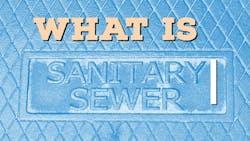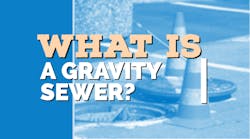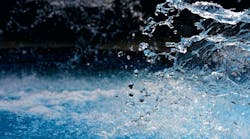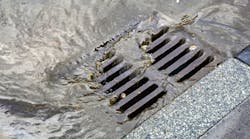What is a sanitary sewer overflow?
A sanitary sewer overflow is when sanitary sewers release untreated or partially treated sewage into the environment before it reaches sewage treatment facilities.
Sanitary sewer overflows are different than combined sewer overflow. The latter is designed to collect large quantities of stormwater in addition to sewage and industrial wastewater.
Where does sanitary sewers water go?
In a combined sewer system, wastewater flows from its source (homes, commercial buildings) into a sewer drain that also collects storm water and eventually into a municipal wastewater treatment system for treatment. Usually, it is then discharged into a local water source.
Why is there sewer overflow in heavy rain?
When too much rainwater enters the water treatment system, the capacity of rainwater that can enter and flow through is exceeded and, in this scenario, the sewer overflows. Other possible causes of sewer overflow in heavy rain include breaks or deterioration in sewer pipes, manholes, and in connections due to old infrastructure age and broken or clogged pipes.
Depending on the wastewater treatment system, which could vary due to the physical locations and jurisdictional management practices, the sewer water could use gravity to move sewage to the wastewater treatment plants, and when not possible lift stations are used.
These lift stations typically utilize power. When the power fails, the lift station is not operational and sewage overflows can occur. Disposal of oil, grease and unflushable wipes down the drain can clog pipelines and are possible causes of sewage overflow.
Causes of sanitary sewer overflow
When sanitary sewer overflow occurs frequently it indicates problems with the sanitary systems. These could be due to large debris, such as tree roots, being present in the sewer water. This can cause water flow disruption, inadequate pump maintenance and equipment failure.
According to the EPA, there are at least 23,000 to 75,000 sanitary sewer overflows per year and possible causes of sanitary sewer overflow include sewer defects that allow stormwater and groundwater to overload the system, power failures, and outdated sewer design.
Categories of sanitary sewer overflows
There are three categories of sanitary sewer overflows:
Category 1
Discharges of any volumes that reach surface water or a municipal separate storm sewer system is a Category 1 sanitary sewer overflow. A typical scenario is when potable water leaks out of ruptured line supplies. If left untreated, this can become a Category 2 or 3 sanitary sewer overflow depending on factors including how long the system has been left untreated and contact of the potable water with the surrounding contaminants.
Category 2
When discharges of untreated or partially treated water of 1,000 gallons or more results from a sewer system failure or flow condition that do not reach surface water, then this discharge is classified as a Category 2 sanitary sewer overflow. This category could include gray water which is water released from domestic sources such as sinks, toilets, and washing machines.
Category 3
This category refers to all other discharges not in Category 1 or 2.
Sanitary sewer overflows that reach waters of the U.S. are point source discharges.
Prohibition
According to the US EPA, sanitary sewer overflows are prohibited unless authorized by the NPDES permit. Sanitary sewer overflows are illegal under the Clean Water Act.
Management of sanitary sewer overflows
There are statewide approaches to address sanitary sewer overflows. For example, the state of California has a State Water Board that adopted a Statewide General Waste Discharge requirements for sanitary sewer systems (Water Quality Order No. 2022-0103-DWQ) in December 2022. This order contains findings, information on prohibitions on discharges of sewage, and also enforcement provisions. Water Code section 13267 and 13383 authorizes the Regional Water Boards and the State Water Board in the State of California to establish monitoring, inspection, entry, reporting and recordkeeping requirements pertaining to discharges to navigable waters, into a publicly owned treatment works, and also disposal of sewage sludge.
Water Quality Order No. 2022-0103-DWQ for the State of California also covers underground sanitary sewer system leakage. Just as with sanitary sewer overflows, because they contains untreated or partially treated sewage containing microorganisms that can imperil health, underground sanitary sewer system leakage can also cause health risks via pollution of groundwater supply and also pollution of surface water, thus potentially causing violations of the Clean Water Act.
Prohibited in Water Quality Order No. 2022-0103-DWQ is discharge of sewage from a sanitary sewer system to the Waters of the State of California and any discharge that creates a nuisance or condition of pollution defined in Water Code section 13050(m). There are notification guidelines in Water Quality Order No. 2022-0103-DWQ for Spill Categories 1, 2 and 3.
What risks are associated with sanitary sewer overflows?
In addition to the health risk associated with microorganisms in the sewer water, sanitary system overflows can also impact water quality and, in turn, public health via ingestion of contaminated seafood. For example, water bodies contaminated by raw sewage can contaminate shellfish. Eating harvested sewage-contaminated shellfish have been reported to cause illnesses.
How to clean sewer overflow
Because sewer overflow carry health risk due to the presence of microorganisms in the raw sewage, it is imperative to reduce or eliminate sanitary sewer overflow. This can be done by cleaning and maintaining the sewer system, reducing infiltration and inflow of the sewer system and preparation and implementing management plans for wet weather when sanitary sewer overflow occurs.
How do you reduce or stop sewer overflow?
According to the EPA, sanitary sewer overflow can be reduced or eliminated by:
- Cleaning and maintaining sewer systems.
- Repairing broken or leaking service lines to reduce infiltration of these service lines with sewer water.
- Upgrading sewage treatment plant capacity and/or reliability.
- Educating the public on how fats, oils, and grease can clog sewer and how to properly dispose fats, oils, and grease.
There are also state-wide guidelines on reducing and eliminating sanitary sewer overflow. For example, the Florida’s Department of Environmental Protection provides information, beside the causes of sanitary sewer overflow, on how to prevent sewage spills. The highlight of this is the Clean Water State Revolving Fund that provides “loans to local governments to plan, design, and build, or upgrade and expand wastewater and stormwater facilities.”
Facts on sanitary sewer overflows
- Sanitary system overflows are a concern – there are at least 23,000 to 75,000 sanitary sewer overflows per year.
- Sanitary system overflows are prohibited under the Clean Water Act.
- Individual states have set up their water quality standards to manage sanitary system overflows such as the State of California.
- Sanitary system overflows can be categorized as Category 1, 2, or 3 depending on their source.
- Some states provide funds for managing sanitary system overflows.
About the Author
Saleha Kuzniewski
Saleha Kuzniewski, Ph.D. has authored several publications in the fields of scientific research, biotechnology, and environmental regulations. She is the winner of the 2023 Apex award for publication excellence. She is also the founder of Environmental Remediation & Innovations, LLC. Kuzniewski can be reached at [email protected].




